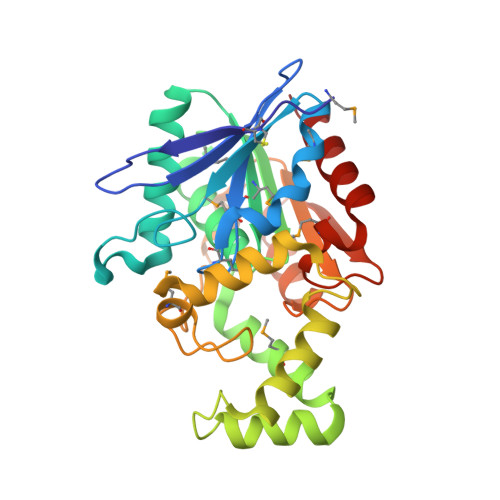Structures of the tricorn-interacting aminopeptidase F1 with different ligands explain its catalytic mechanism
Goettig, P., Groll, M., Kim, J.-S., Huber, R., Brandstetter, H.(2002) EMBO J 21: 5343-5352
- PubMed: 12374735
- DOI: https://doi.org/10.1093/emboj/cdf552
- Primary Citation of Related Structures:
1MT3, 1MTZ, 1MU0 - PubMed Abstract:
F1 is a 33.5 kDa serine peptidase of the alpha/beta-hydrolase family from the archaeon Thermoplasma acidophilum. Subsequent to proteasomal protein degradation, tricorn generates small peptides, which are cleaved by F1 to yield single amino acids. We have solved the crystal structure of F1 with multiwavelength anomalous dispersion (MAD) phasing at 1.8 A resolution. In addition to the conserved catalytic domain, the structure reveals a chiefly alpha-helical domain capping the catalytic triad. Thus, the active site is accessible only through a narrow opening from the protein surface. Two structures with molecules bound to the active serine, including the inhibitor phenylalanyl chloromethylketone, elucidate the N-terminal recognition of substrates and the catalytic activation switch mechanism of F1. The cap domain mainly confers the specificity for hydrophobic side chains by a novel cavity system, which, analogously to the tricorn protease, guides substrates to the buried active site and products away from it. Finally, the structure of F1 suggests a possible functional complex with tricorn that allows efficient processive degradation to free amino acids for cellular recycling.
Organizational Affiliation:
Max-Planck-Institut für Biochemie, Abteilung Strukturforschung, Am Klopferspitz 18a, D-82152 Martinsried, Germany. goettig@biochem.mpg.de
















